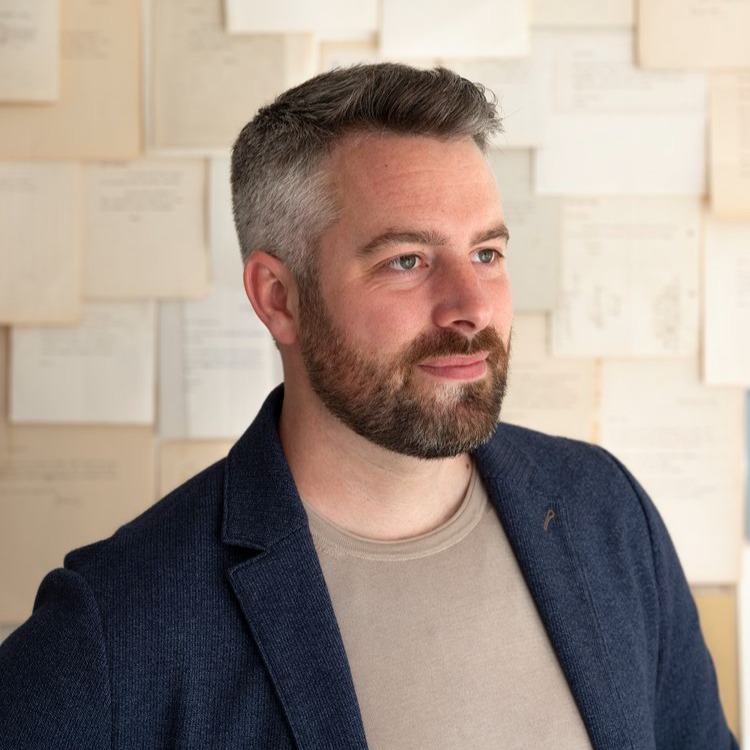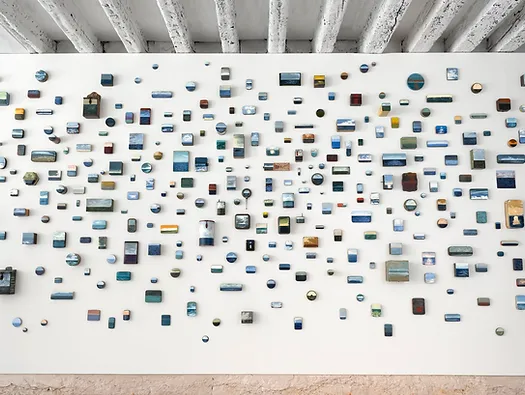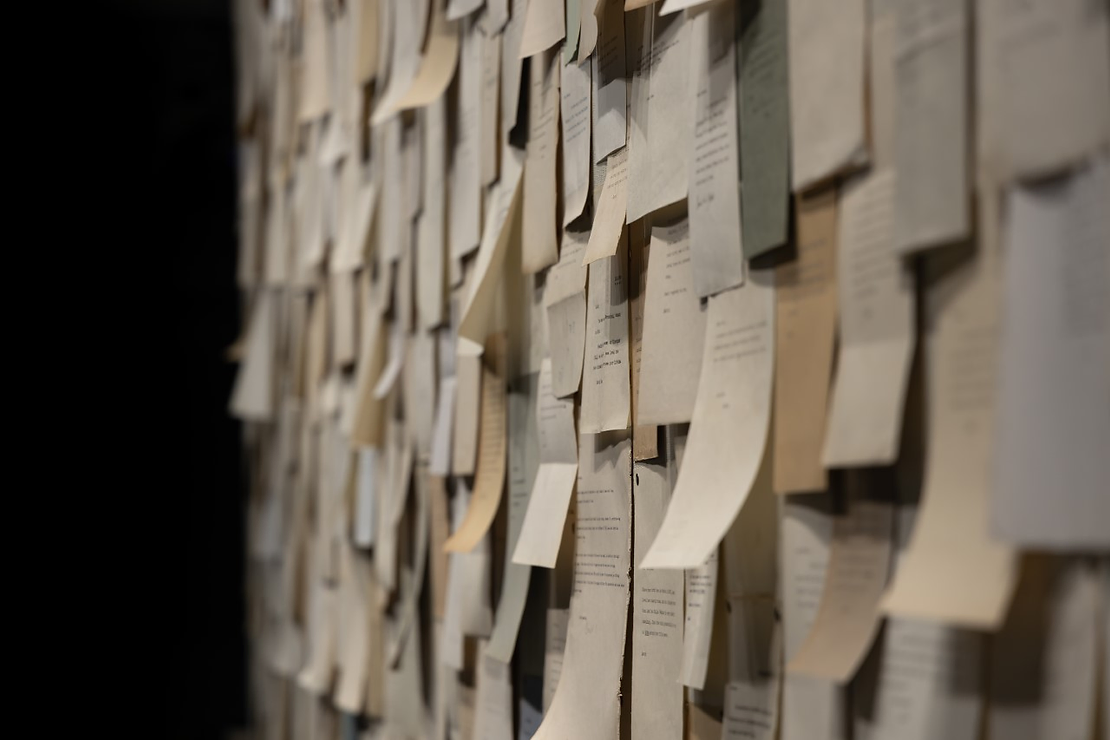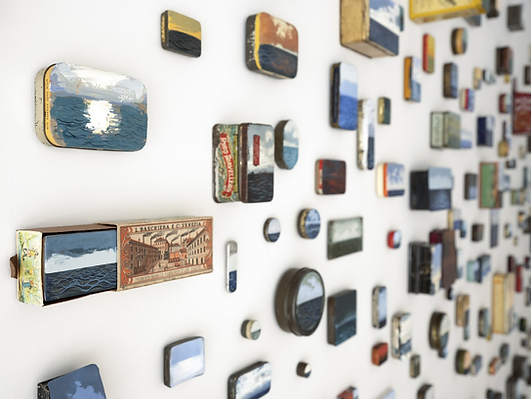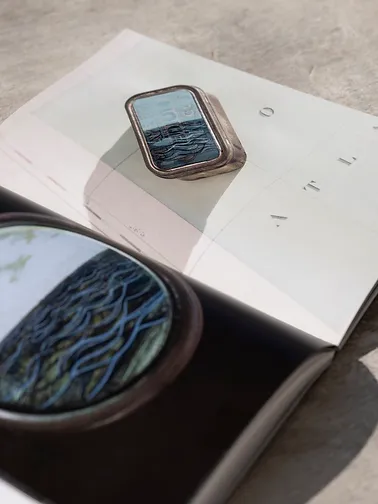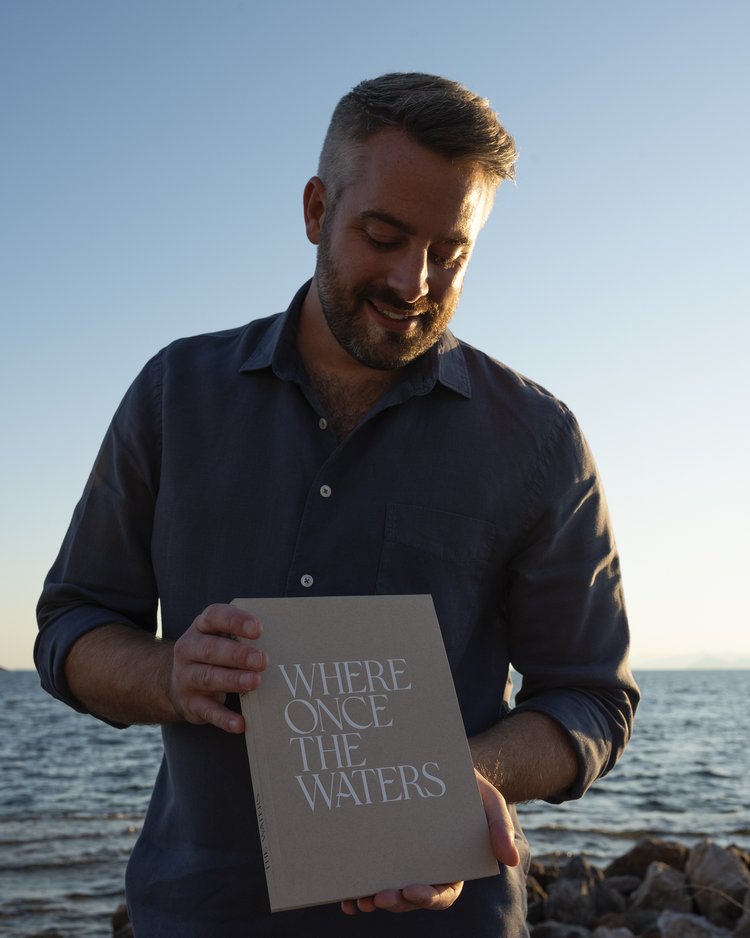David Cass is an artist with a mission. It’s rare to see an artist intertwine their entire oeuvre so closely with one particular theme or issue, but Cass has committed his whole body of work to the issue of climate change.
Hailing from Edinburgh, Cass has been representing the sea in his work for the last ten years, and more recently engaging with the problem of rising sea levels. He uses ephemera – found objects like matchboxes, photographic slides, cupboard doors, or apothecary bottles – and paints miniature seascapes on them in his impressionistic style of undulating lines and flecks of sharp detail. These recycled materials are an important aspect of his work. He refuses to add to the abundance of excess materials already on the planet, and they reach back in time to connect us with the past, allowing us to examine the fingerprints that human beings have left on the earth. His most recent project, Where Once the Waters, comprises of two sets of works; one is his signature seascapes painted on 365 antique tins, one for each day of the year, while the second represents a step forward in his style. He has allowed people from all over the world to write to him with their place and date of birth. He writes back, on collected paperwork bearing the timestamps of our lived experience – legal documents, birth certificates, correspondences – with the amount by which the sea level has risen at the nearest coastline since their birth.
This is a project which seeks to place us, the viewer, in the centre of a crisis that can seem so distant and simultaneously so contiguous it’s overwhelming. Cass offer an entryway by making the issue personal, immediate. He humanises it: he makes it emotional so that we might engage better and start a dialogue, or even make a change in our own lives.
I asked David to give me a little more insight into his work and the themes it speaks to. Read what he had to say below.
I’m curious as to how you came to the themes in your Where Once the Waters projects. Has sustainability and climate consciousness always been important to you? I imagine it takes a significant role in you personal life, given its significance in your work, and I know your time in Venice brought the issue of rising sea-levels into particular focus, but is that moment the only catalyst?
Where Once the Waters is an ongoing installation project comprising two evolving artwork sets, exhibited together and independently. One is a series of typed letter artworks; the other, a group of miniature seascape paintings. First shown during the 59th Venice Biennale, the works principally address the issue of rising sea levels, inviting the viewer to reflect on changes which have occurred across their lifetimes, whilst offering commentary on sustainability. These artworks are essentially the result of over a decade’s work and research, crafted and refined as my understanding of the climate crisis has deepened. These works were not created specifically for Venice – though exhibiting them there was important – rather, they’re intended to be universal, for the issues they explore are happening everywhere.
Your work is unique. Do you have any inspirations, either stylistically or thematically?
Thank you. I often feel a need to step back from my practice and reflect, so the work – despite being formed of found materials – remains fresh. My inspirations come from everywhere, and though I most often paint and write about the sea, I don’t feel the need to work directly at the coast. I’ve spent so long looking out to sea that the image of water comes from within.
Asides from subject matter inspiration, I learn a great deal from my contemporaries, particularly those involved in the collaborative project A La Luz. This is a project I started back in 2014 along with Spanish artist Gonzaga Gómez-Cortázar Romero, intended as a platform for environmental artists of all kinds. I write today from Concord, MA (USA) where we have just opened an exhibition of international artists, each exhibiting inspiring artworks responding to the climate emergency.
The methods by which you engage with what can be a difficult subject matter are very poignant. Using such personal items as in the letters and tins is such an effective way to bring the issue of climate change to bear in the individual, and to subtly nod to the importance of recycling. How did you acquire these items – in particular the paper documents? How did you chose which documents or tins to use?
I’m glad that you noticed this – I take great care to work with familiar, everyday objects; so that my exhibitions offer entry points. I believe that environmental art particularly needs to be accessible and material choices are one way to do this. I find all of my “surfaces” at flea-markets, antique shops, car-boot sales… I never use new plastics or metals; products which have in part led – through their production – to the warming of our planet. I work with items which show signs of use – pen marks, scuffs, stamps, stains – proof that they have lived a life and served a purpose.
Also the letters in particular offer a slight stylistic shift from previous projects, how did you come to the idea and how did it develop?
My hope is that the style of these artworks is not so dissimilar to my other work; that my “handwriting” might be recognisable. I have, in the past, painted onto papers such as these, and so typing (with vintage typewriters) sits comfortably. The idea to use the concept of the letter rather than painting was to be more direct, more personal, to bring home this important issue. I believe that we stand a better chance of engaging with environmental issues (and therefore taking action) if we are able to enter into the data individually, and that is what each letter does. Each tells the reader how much the sea has risen, at the coast nearest their birthplace, over the course of their lifetime.
Making the projects so personal taps into the dialogue around individual responsibility – of course we can and should all do our bit to help – but how do you wrestle with the fact that individual carbon footprints are just a drop in the ocean of rapid climate change, and will be useless without widespread, systemic change? 100 fossil fuel companies were responsible for roughly 70% of global greenhouse gas emissions in the last 3 years. In fact, the concept of personal responsibility for carbon emissions was popularised by the oil company BP in an ad campaign in 2005. There is of course a difficult balance to be struck between holding global corporations and governments accountable and recognising the collective impact of the individual, but do you have any thoughts on this aspect of the issue your work throws up?
This is an extremely difficult question; I am not educated enough to offer one single clear answer. And so my response will vary depending on which day you ask me. These figures paint a depressing picture, and often there are days when our situation feels completely insurmountable. But today, rather than being overwhelmed by this data, I choose to believe that if enough of us exercise restraint, we can make a difference. We can only impact these giant corporations by rendering them redundant or forcing them to seriously reroute. In the meantime, we must look to the Earth and champion the nature based strategies that we do have agency over, and which have the ability to shield us from the effects of extreme carbon release. For example, we can campaign to protect our coastal wetlands, seagrass meadows, salt marshes, peat bogs, forests and rainforests – all capable, if protected, of storing and processing vast volumes of carbon pollution and thus limiting global temperature rise and perhaps slowing issues such as rising sea levels.
My artwork never places blame or suggests personal responsibility; I am simply opening a conversation. We live in a world in which carbon expenditure is unavoidable. Petroleum products are part of everyday life, even when we don’t realise it. We must do what we can, with the means at our disposal. I am an artist, not a scientist, and the best strategy I have is to raise awareness, to contribute to equal and ongoing creative discussions. I believe strongly that many seemingly insignificant individual actions combine to make a larger impact.
Many thanks to David for his time and insights. You can find out more at https://davidcass.art
50 of his 365 tins are on display at Moncrieff-Bray Gallery, near Petworth, West Sussex, until 24th June 2023.
Written by Alice Tarplee

